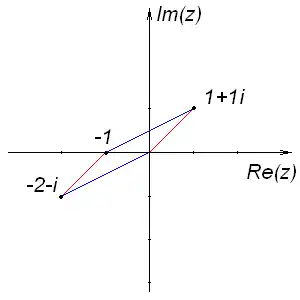A complex number is something that has both real and imaginary parts. So what is an imaginary number? an imaginary number is represented as j. j2 = -1 so -10.5 = j. Using j all quadratics can be solved. this makes j a very powerful and usable idea. j is not a prime.
We often give complex numbers in Cartesian form
Note: The letter j is generally used by engineers and i by mathematicians. j is used throughout this course.
Proof
how do you solve this: ?
You can rearrange into:
However how do we then deal with the ? We do it by substituting it for a letter, j. This works because: is true which was our original equation. Therefore j is a root of this equation.
Operations
Powers of j
powers of j are very interesting and show a looping pattern.
,
,
,
,
This fact can be used to simplify complex numbers.
Questions
Simplify
Basic Operations
These can all be easily calculated by yourself, I've just included them to show that j follows all of the rules of algebra.
Addition:
subtraction:
Multiplication:
Division: . Essentially the same but there is no real simplification.
Question
Evaluate
Argand diagrams

Complex numbers can be plotted on an Argand diagram, with the x axis being used to represent real numbers and the y axis being used to represent the imaginary part of an equation.
Knowledge of Radians is recommended for the next section.
We can therefore give complex numbers in a different form, using their modulus (distance from origin) and angle (in radians). This is called polar form. .
These equations can be calculated using simple trigonometry and Pythagoras.
With θ in radians and -π < θ ≤ π
You may wonder what the value of polar form is, and that's fine as it is not readily apparent. When the solutions of an equation are plotted on an Argand diagram they form a circle (and finding the equation of the circle is a common question) The equation of a circle in this form is:
Questions
Find the polar form